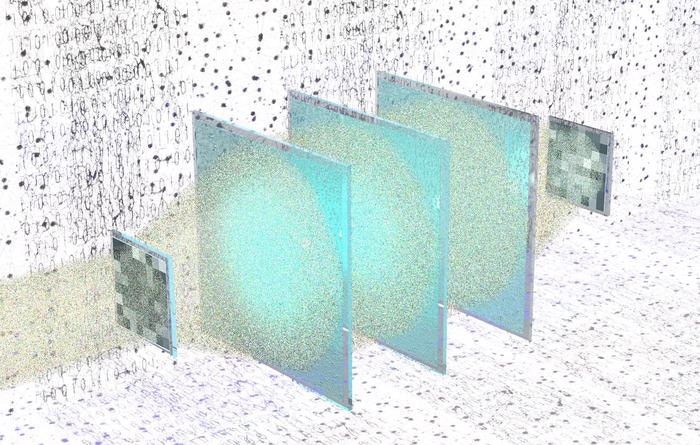Applications across various sectors employ different forms of linear transformation, like the Fourier transformation, for information processing.
 All-optical synthesis of an arbitrary linear transform using diffractive surfaces. Image Credit: Ozcan Lab at UCLA
All-optical synthesis of an arbitrary linear transform using diffractive surfaces. Image Credit: Ozcan Lab at UCLA
The transformations are usually executed in the digital domain through electronic processes, which have a limited computational speed due to the electronic chip used. This forms a bottleneck as the data and image size enlarges. A method to address this issue is by replacing the digital processors with optical counterparts and employing light to process information.
A new study published in the journal Light: Science and Applications, led by Professor Aydogan Ozcan from the Electrical and Computer Engineering Department at the University of California, Los Angeles (UCLA) and co-workers, reports a deep learning-based design technique for all-optical computation of an arbitrary linear transform.
The all-optical processor employs spatially engineered diffractive surfaces to manipulate optical waves and calculates any suitable linear transform as the light passes via an array of diffractive surfaces. Using this methodology, the desired linear transform is fulfilled at the speed of light propagation, with the incoming light transmission through these diffractive surfaces.
Apart from the computational speed, the all-optical processors are capable of computing without consuming any power, except for the illumination light, which makes it a passive and high-throughput computing system.
The analysis executed by the UCLA team highlights that the deep learning-based design of these all-optical diffractive processors is capable of precisely synthesizing any arbitrary linear transformation between an input and output plane. The resulting optical transforms render remarkable enhancement in precision and diffraction efficiency, as the number of diffractive surfaces increases, demonstrating that deeper diffractive processors are more robust concerning their computational abilities.
A broad range of linear transformations was executed to represent the successful operation of this technique. This includes, for example, randomly generated phase and amplitude transformation, the Fourier transform, filtering operations and image permutation.
This computing methodology can be widely applied to any section of the electromagnetic spectrum to develop all-optical processors using spatially engineered diffractive surfaces to perform an arbitrary complex-valued linear transform universally.
All-optical information processing networks can also be formed using these aspects to perform the required computational task between an input and output plane, offering a passive, power-free alternative to digital processors.
The study authors include Onur Kulce, Deniz Mengu, Yair Rivenson and Aydogan Ozcan from UCLA School of Engineering.
Journal Reference:
Kulce, O., et al. (2021) All-optical synthesis of an arbitrary linear transformation using diffractive surfaces. Light: Science & Applications. doi.org/10.1038/s41377-021-00623-5.